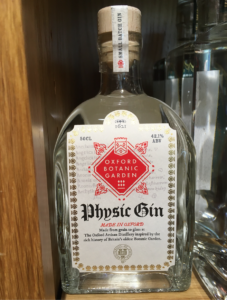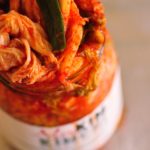‘From Grain to Glass’: The Authenticity of Oxford Physic Gin
Nestled amongst the grandiose of Oxford architecture lies The Turl, as it is often referred to colloquially. Towards the south end of the street sit an abundance of charming chocolate-box shops, one of which is The Oxford Wine Company, which dates back to 1840. A quick glance at the shop’s classical exterior indicates its authentic appeal to the meandering tourist in search of bottling that quaint Oxford experience.
Oxford attracts over seven million visitors per annum, and out of this, local businesses generate a staggering seven hundred and eighty million pounds (Oxford County Council 2020). This considerable touristic revenue is not (as it might be conceived ostensibly) simply a matter of business’s twiddling their thumbs as they bask romantically in the globally reputed, cultural-historical significance of Oxford. Rather, it concerns a well-attuned ‘eye politic to the present situation’ (Sahlins 1999: 402); a marketing prowess alert to the not-so-subtle workings of the capitalist-consumerist structure that (Oxford) “culture” is wedded to. In other words, local businesses and tourist attractions know how to ‘transform(ing) heritage as a sign of authenticity into economic value’ (Cavanaugh and Shankar 2014: 55).
In the doorway to The Oxford Wine Company shop is a rather dishevelled display of old wine bottles and photographs. The less than microscopic layer of dust coating these objects (each stamped with the words ‘Oxford Wine Co’) gives visual aid to the upfront material construction of history and heritage.
At the back of the shop (next to the cashier engaged in an overly enthusiastic conversation concerning the specificity of ouzo in tomato sauce), there appear some narrower shelves furnished with different varieties of Oxford-crafted gin and vodka. These are made by the so-called ‘Oxford Artisan Distillery’ – the brand name itself alluding to a romantic sense of the local and of hand-nurtured, time-taken production and skill.
According to Cavanaugh and Shankar (2014: 61), creating authenticity, which emerges from the ‘political-economic dynamic of commodity production’, relies ‘heavily on cultural and linguistic values’, and these are often presented materially on the object. The blurb written on the labels of each of these bottles signifies this argument potently. Indeed, they do not simply describe the liquors as authentic (nowhere does the word ‘authentic’ actually feature); but rather, they employ a specific rhetoric centred on the distinctiveness of Oxford heritage to define exactly what makes them authentic (Ibid.: 53). For example, the ‘Physic Gin’ (already exuding ‘linguistic materiality’ by the name’s 17th-century styled lettering on the label [Ibid.]) provides a nice rounded history of the Oxford Botanic Garden, pointing out factors such as the fact it was founded as long ago as 1621; that it is the oldest botanic garden in Britain; and how a 1648 list of all the plants grown in the garden is the inspiration behind the gin’s ‘unique Oxford flavour’ (whoever thought you could taste Oxford!). The authenticating device at play here is, of course, the choice of language linking place and history. It foregrounds an image of nature as timeless; of bumble bees pollinating age old herbal plants bearing unique medicinal properties, which sway delicately in the same soft breeze, warmed by the same English sun on the same ancient plot of land. Without getting too carried away by the poetic imaginings of a tourist, the point is simple: that the authenticity of this product is created by generating a connection between the contemporary material good (the gin made from medicinal herbs) and place (the Oxford Botanic Garden) with the history of this good and place via linguistic means (Ibid.: 55). Cavanaugh and Shankar (2014: 55) refer to this as a kind of authenticity generated out of ‘creating chronotopes of continuity’; anchoring the past in the present. Thus, in turn, this authenticity enables the Physic Gin to “stand out” within a vast, largely homogenous global marketplace of other gins.
On a final note, Sahlins (1999: 403) draws on an illuminating point made by Brumann (in press), arguing that people not only ‘want culture’, but ‘they often want it … bounded, reified, essentialised and timeless’. Contemplating this, I argue that not only does Physic gin in many ways embody exactly this “culture package”, but moreover, that the “people” referred to here are perhaps best epitomised by the shrewd marketers at Oxford Artisan Distillery vis-à-vis the culture-desiring Oxford tourist-consumer.
References:
Cavanaugh, J and S, Shankar. 2014. Producing Authenticity in Global Capitalism: Language, Materiality, and Value: American Anthropologist 116 (1): 51-64
Oxford County Council (2020). https://www.oxford.gov.uk/info/20124/economy/454/economic_statistics. [Accessed: 09/02/20].
Sahlins, Marshall. 1999. Two or three things that I know about culture. Journal of







